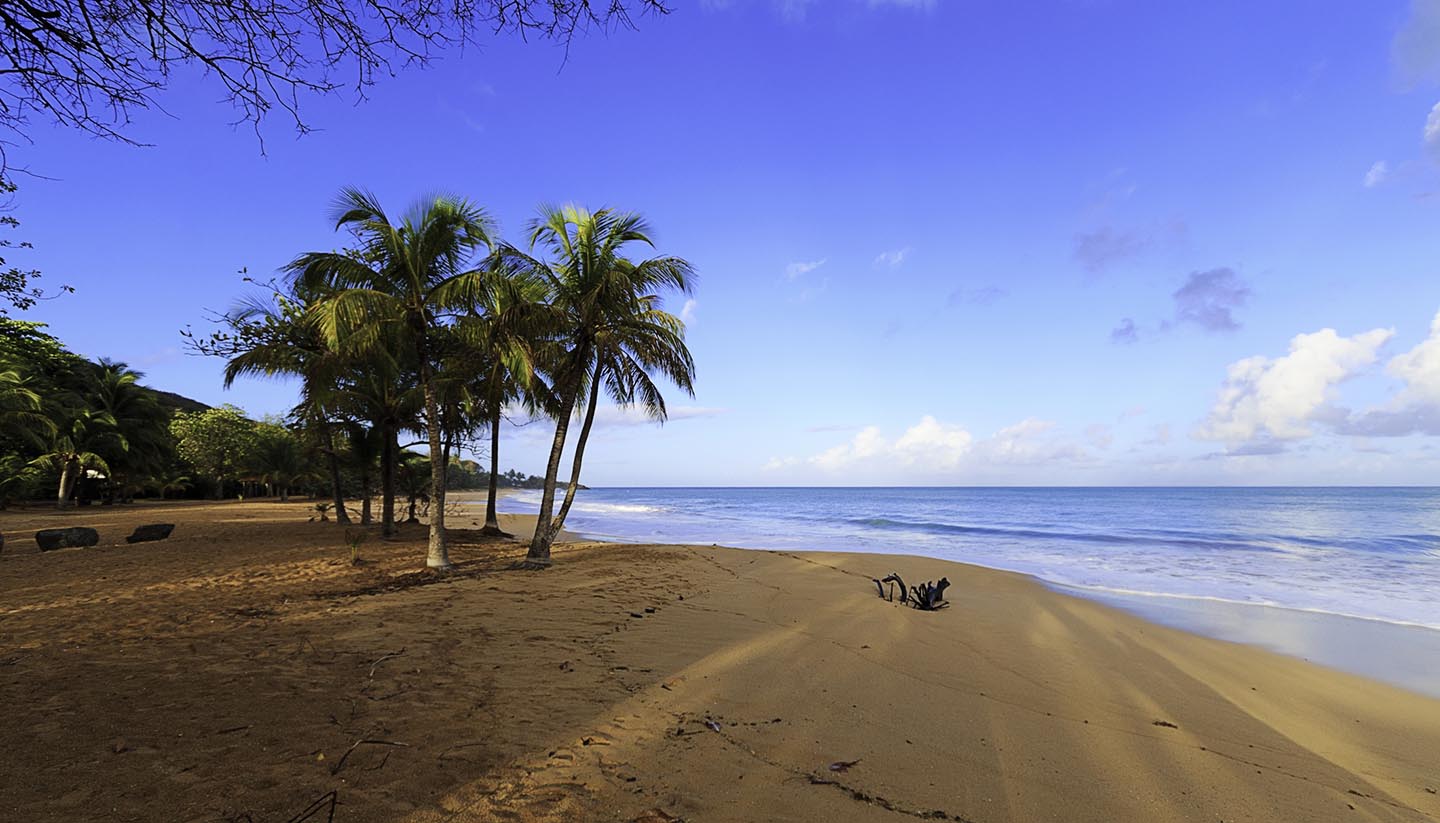Things to see and do in Guadeloupe
Attractions in Guadeloupe
Bask on the beaches
From black, volcanic sands to sweeping icing sugar shores, Guadeloupe boasts some of the finest beaches in the Caribbean. Topless bathing is acceptable but do expect roving eyes. For sundowners Plage de la Perle on Grand-Terre is hard to beat with its golden sand, rustling palm trees and ramshackle beach bars. For quieter shores explore Sainte-Anne on Grand-Terre.
Climb an active volcano
Hike up La Grande Soufrière, an active volcano, which tops out at 1,467m (4,813ft) and offers a tough climb. However, the panorama that greets visitors at the summit makes it well worth the effort – from the top it is possible to see the verdant peaks of the surrounding islands. The last significant rumble was in 1976.
Explore the ruins of sugar plantations
Discovered by Christopher Columbus in 1493, the island of Marie-Galante was divided into sugar plantations by the French. Relics of these plantations dot the island, but perhaps the most interesting ruin can be found at the Murat Plantation, which was the workplace of 207 African slaves. Visitors can see the remains of a windmill and look around the plantation house.
Get wet at Carbet Falls
The Carbet Falls, located on Basse-Terre, is a series of three spectacular waterfalls in the foothills of La Grande Soufrière. Only experienced and confident hikers should attempt trekking to the first or third waterfall (where a refreshing dip awaits hardy pilgrims), but the second waterfall is easily accessible to all.
Go scuba diving along the west coast
The best dive sites can be found along Guadeloupe's west coast. The small fishing village of Anse Duché has a sunken shipwreck named L'Augustin to explore and there are several sites surrounding the Pigeon Islets, which form part of the Réserve Cousteau. The Grand Cul-de-Sac Marin Nature Reserve, a protected marine reserve in the north, also boasts large coral reefs.
Hike the National Park of Guadeloupe
The National Park of Guadeloupe boasts some 300km (188 miles) of marked trails, most of which are located in the rainforest. This balmy jungle is home to more than 100 species of orchids, 11 species of bats and several rare species of bird. The park is also home to a volcano, a mountain and a waterfall.
Imbibe ancient art
The Parc Archeologique des Roches Graves near Trois-Rivières is home to many of the rock carvings made by ancient tribes such as the Arawaks that once inhabited the Guadeloupe Islands. The park also has a beautiful tropical garden and visitors can enjoy spectacular views across the Les Saintes archipelago.
Infiltrate a French fort
Fort Louis Delgrès, on Basse-Terre, was built in 1650 by French Governor Charles Houel. The fort was the target of frequent attacks by the British Navy, which briefly seized it in 1759. It was eventually decommissioned in 1904 and classified as a national monument in 1977. For the full history, tour with a official guide on Fridays.
Join the Carnival revelry
Guadeloupe Carnival, the most eagerly anticipated event of the year, takes place in the weeks before Ash Wednesday and is a jamboree of epic proportions. Islanders dress up in colourful costumes, parade through the streets and dance until the small hours – for the best part of six weeks. It's worth going out your way for.
Kayak through the mangroves
The protected mangrove swamps of Guadeloupe abound with migratory birds, including pelicans, kingfishers and herons. These species are best viewed by taking a kayaking expedition through the mangrove forests, which are located along the western coast of the country. Kayak Canyon Guadeloupe hire kayaks by the day, while there are plenty of hiking trails through the swamps.
Quaff the local tipple
Guadeloupe's famous rum institution, Musée du Rhum, explains how the sugarcane spirit is produced and, more importantly, offers visitors a taste of the local brew. There are around 15 rums to choose from, all of which are produced by the distillery next door.
Stroll around the colonial capital
Pointe-à-Pitre is the commercial capital of Guadeloupe and is characterised by its colourful colonial buildings, bustling markets and lively inhabitants. The centrepiece of the city is the Place de la Victoire where more than 850 people were beheaded by guillotine during the French Revolution. Today, people socialise, shop and watch the world go by.
Visit the Creole Ecological Museum
Ecomusee Creole de la Guadeloupe can be found just outside the commune of Sainte-Rose on Basse-Terre. It boasts a botanical garden which contains fragrant exhibitions relating to the herbs, fruits and vegetables grown on Guadeloupe. The exhibition explores the medicinal properties of the local flora and relates the history of the islands and the different ethnic groups living on them.
Walk above the forest canopy
As well as boasting a zoo and botanical gardens, the Parc Zoologique et Botanique de la Guadeloupe, located on Basse-Terre, has a network of lofty rope bridges, which are suspended above the forest canopy. The views are excellent, but you will need a head for heights.
Walk amongst the dead in Morne-a-l'Eau
In Morne-à-l'Eau, on the island of Grande-Terre, there is an extraordinary, amphitheatre-like cemetery where narrow pathways weave between enormous crypts. Some crypts are extravagant affairs (many were designed by architects for rich families) but all are covered in black and white tiles. The chequered façades on these sepulchres represent the intermingled African and European cultures of Guadeloupe.
Tourist offices
Comité du Tourisme des Iles de Guadeloupe
Address: BP 555, 5, Square de la Banque, Pointe-à-Pitre cedex , 97166Telephone: (590) 820 930.
Website: http://www.lesilesdeguadeloupe.com
Opening times:
Mon-Fri 800-1700. Sat 0800-1300.


